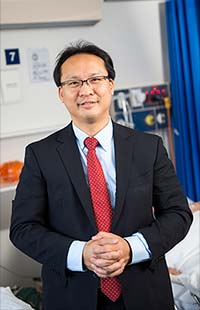
Professor Henry Ma
Research is driving improvements in stroke care – across the timing and type of acute care procedures, medications, stroke rehabilitation and more. Here’s some of the action to look out for.
Professor Henry Ma, director of neurology and stroke at Monash Health, told the limbic that distal thrombectomy was one of the hot topics in stroke.
“At the moment when we do clot retrieval from the vessels in the brain, they are mainly proximal large vessels – the ICA or M1. But there are clots in more distal smaller vessels where it has yet to be proven that doing thrombectomy is beneficial.”
“Some of us are already doing distal clot retrieval but without clear level 1 evidence.”
He said the challenge was that some patients with distal clots actually do quite well even with thrombolysis therapy or no therapy. So there was concern that in some cases, thrombectomy may cause more harm than benefit.
Professor Ma said relevant trials were underway including the phase 3 Frontier AP trial looking to enrol 300-400 patients at Royal Melbourne Hospital.
“The other thing that I think is important is neuroprotection or adjuvant therapy. Despite thrombolysis or clot retrieval, there are still patients that have deficit or disability after these treatments and some patients are not even eligible for these reperfusion therapies. So people are looking at agents to actually neuro protect or help to improve the functional outcome.”
For example, the international phase 3 ESCAPE-NEXT trial is investigating whether nerinetide as an adjuvant therapy during reperfusion therapy provides added benefits.
As well, the local phase 2 ACT 2 trial will be investigating the added benefit of stem cell therapy when administered to stroke patients in the first 24 hours.
Beyond reperfusion, Professor Ma said new evidence was also helping to guide dual antiplatelet therapy for secondary prevention following a minor ischaemic stroke or TIA.
ANZ Clinical Guidelines for Stroke Management currently include a strong recommendation for clopidogrel and aspirin and a weaker recommendation for ticagrelor and aspirin.
However a recent Chinese RCT, published in the NEJM, found the risk of stroke at 90 days was modestly lower with ticagrelor plus aspirin than with clopidogrel plus aspirin.